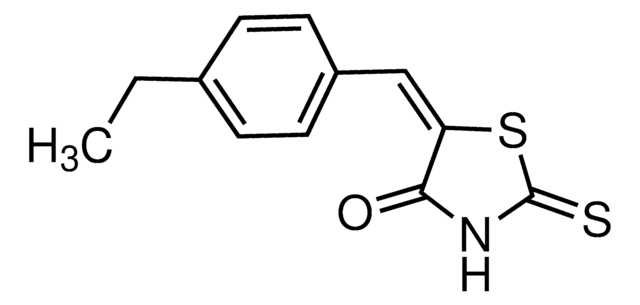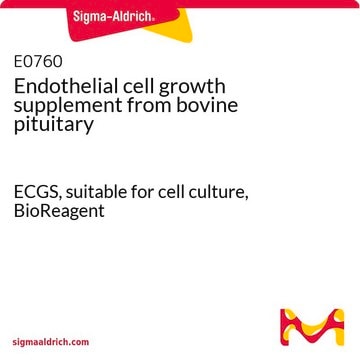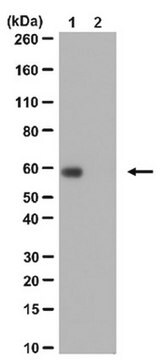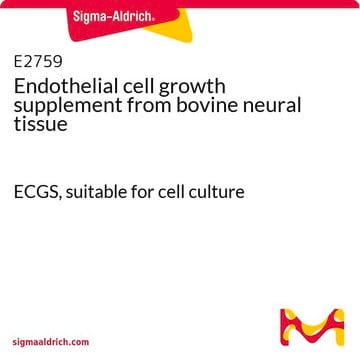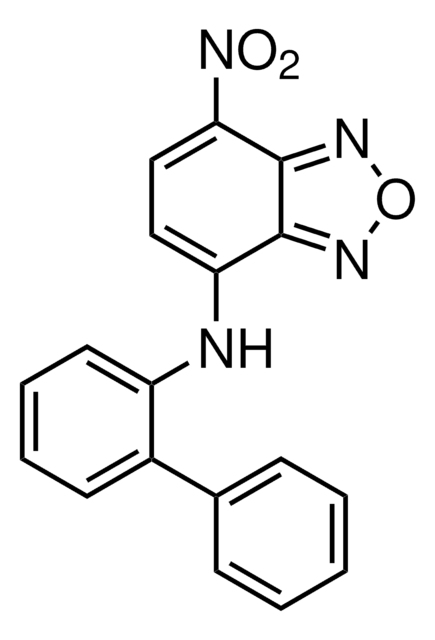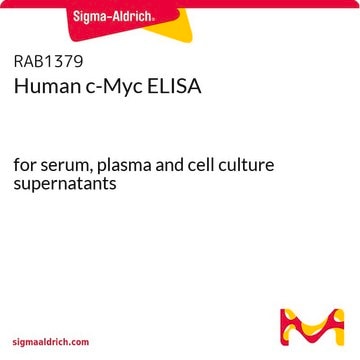475956
c-Myc Inhibitor
The c-Myc Inhibitor, also referenced under CAS 403811-55-2, controls the biological activity of c-Myc.
Synonim(y):
c-Myc Inhibitor, 10058-F4, ( Z,E)-5-(4-Ethylbenzylidine)-2-thioxothiazolidin-4-one, 10058-F4, (Z,E)-5-(4-Ethylbenzylidine)-2-thioxothiazolidin-4-one
About This Item
Polecane produkty
Poziom jakości
Próba
≥95% (sum of two isomers, HPLC)
Postać
solid
producent / nazwa handlowa
Calbiochem®
warunki przechowywania
OK to freeze
protect from light
kolor
yellow
rozpuszczalność
DMSO: 200 mg/mL
Warunki transportu
ambient
temp. przechowywania
2-8°C
InChI
1S/C12H11NOS2/c1-2-8-3-5-9(6-4-8)7-10-11(14)13-12(15)16-10/h3-7H,2H2,1H3,(H,13,14,15)/b10-7+
Klucz InChI
SVXDHPADAXBMFB-JXMROGBWSA-N
Opis ogólny
Działania biochem./fizjol.
c-Myc
Opakowanie
Ostrzeżenie
Rekonstytucja
Inne uwagi
Informacje prawne
Hasło ostrzegawcze
Warning
Zwroty wskazujące rodzaj zagrożenia
Zwroty wskazujące środki ostrożności
Klasyfikacja zagrożeń
Eye Irrit. 2 - Skin Sens. 1
Kod klasy składowania
11 - Combustible Solids
Klasa zagrożenia wodnego (WGK)
WGK 3
Temperatura zapłonu (°F)
Not applicable
Temperatura zapłonu (°C)
Not applicable
Certyfikaty analizy (CoA)
Poszukaj Certyfikaty analizy (CoA), wpisując numer partii/serii produktów. Numery serii i partii można znaleźć na etykiecie produktu po słowach „seria” lub „partia”.
Masz już ten produkt?
Dokumenty związane z niedawno zakupionymi produktami zostały zamieszczone w Bibliotece dokumentów.
Klienci oglądali również te produkty
Nasz zespół naukowców ma doświadczenie we wszystkich obszarach badań, w tym w naukach przyrodniczych, materiałoznawstwie, syntezie chemicznej, chromatografii, analityce i wielu innych dziedzinach.
Skontaktuj się z zespołem ds. pomocy technicznej